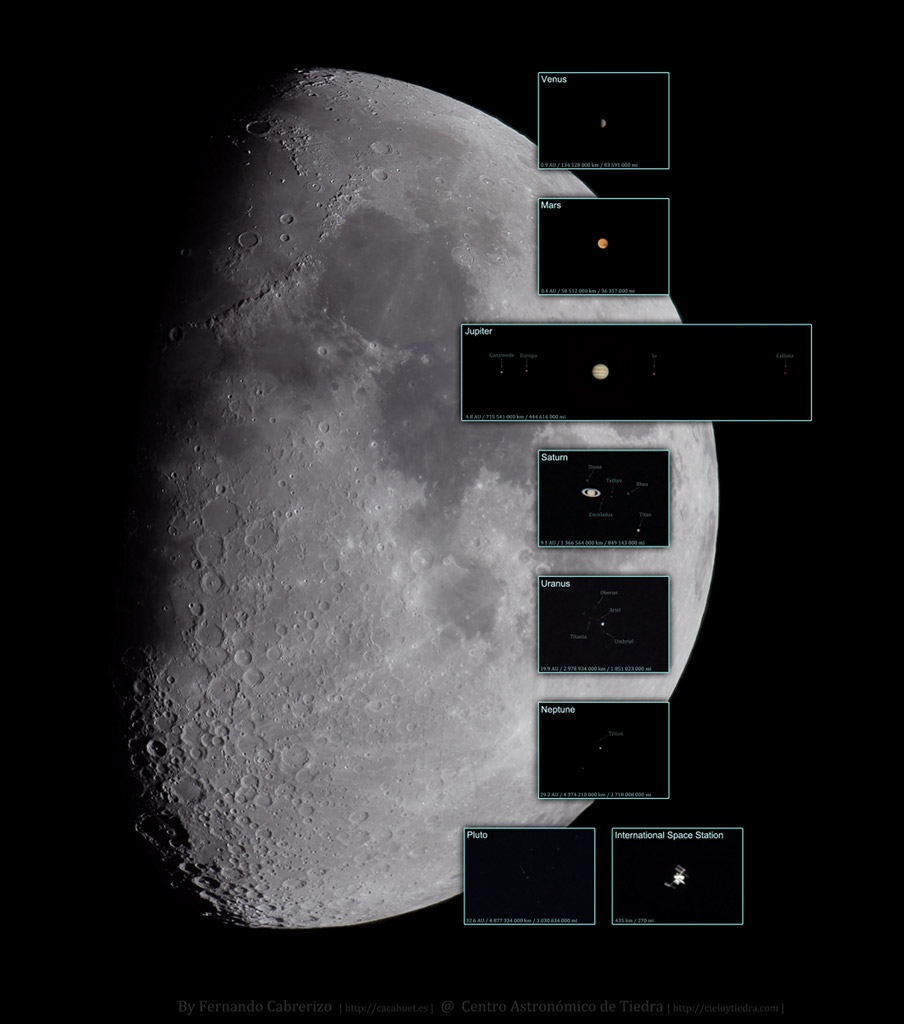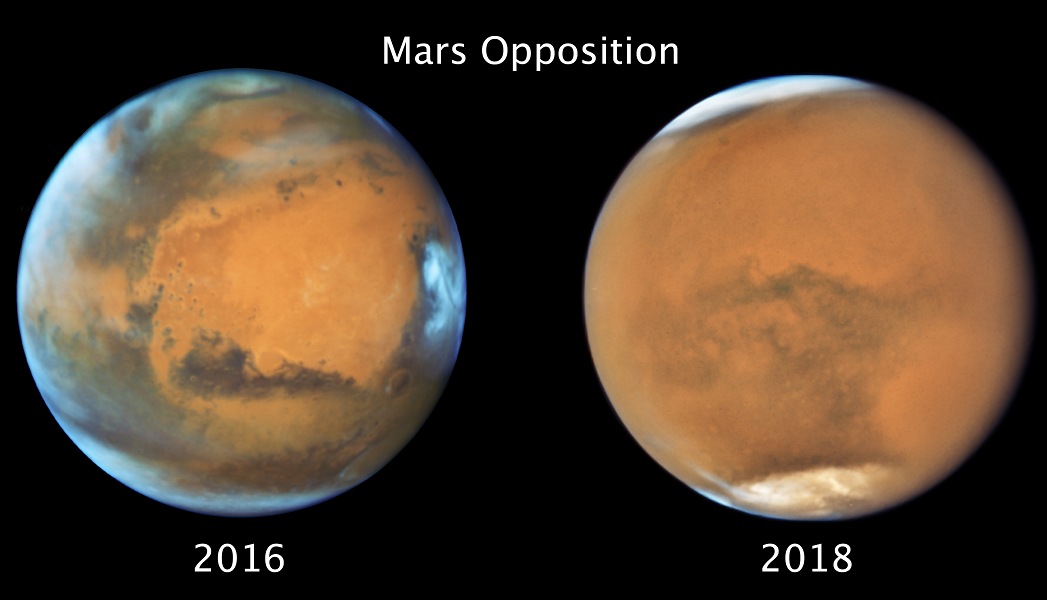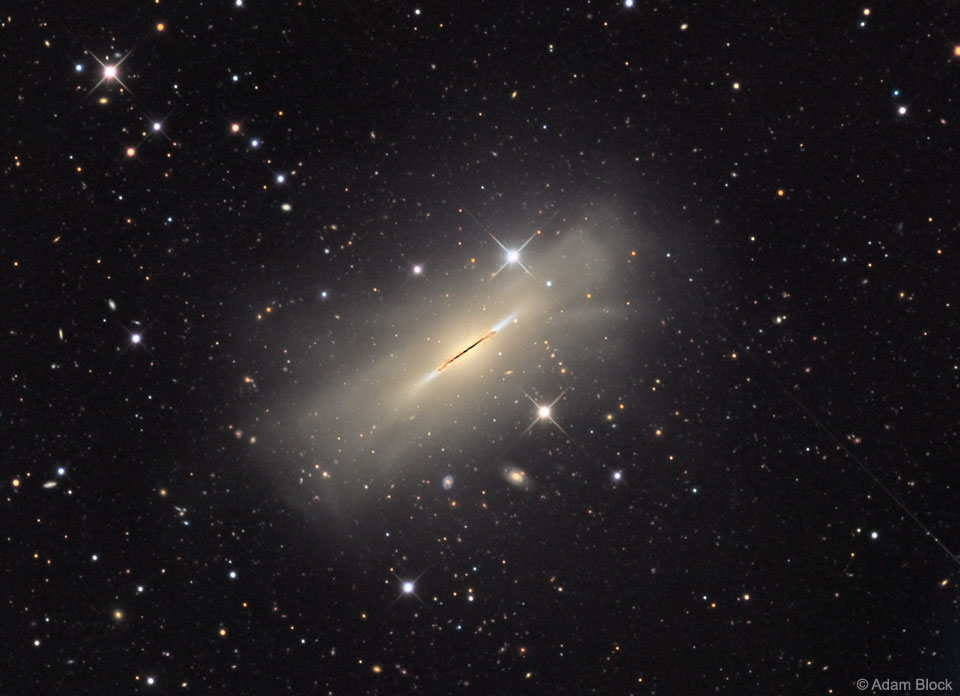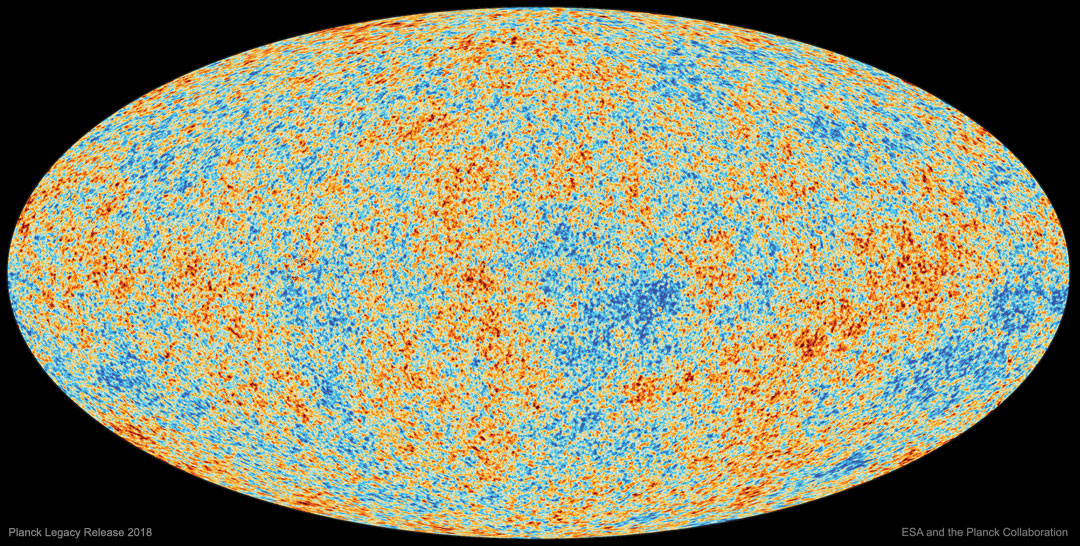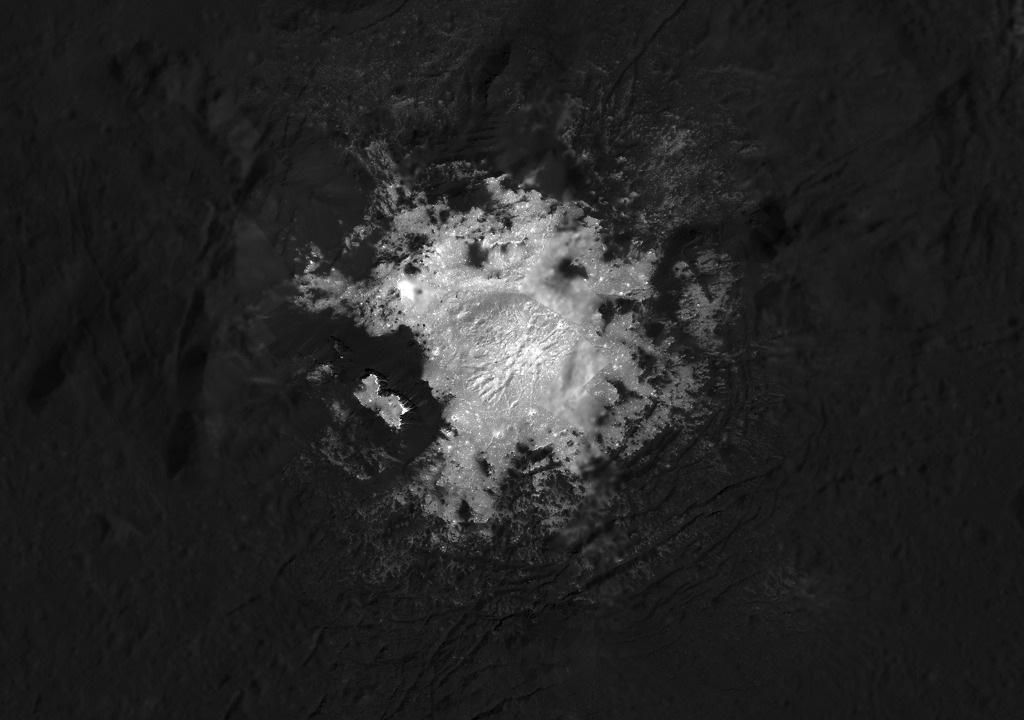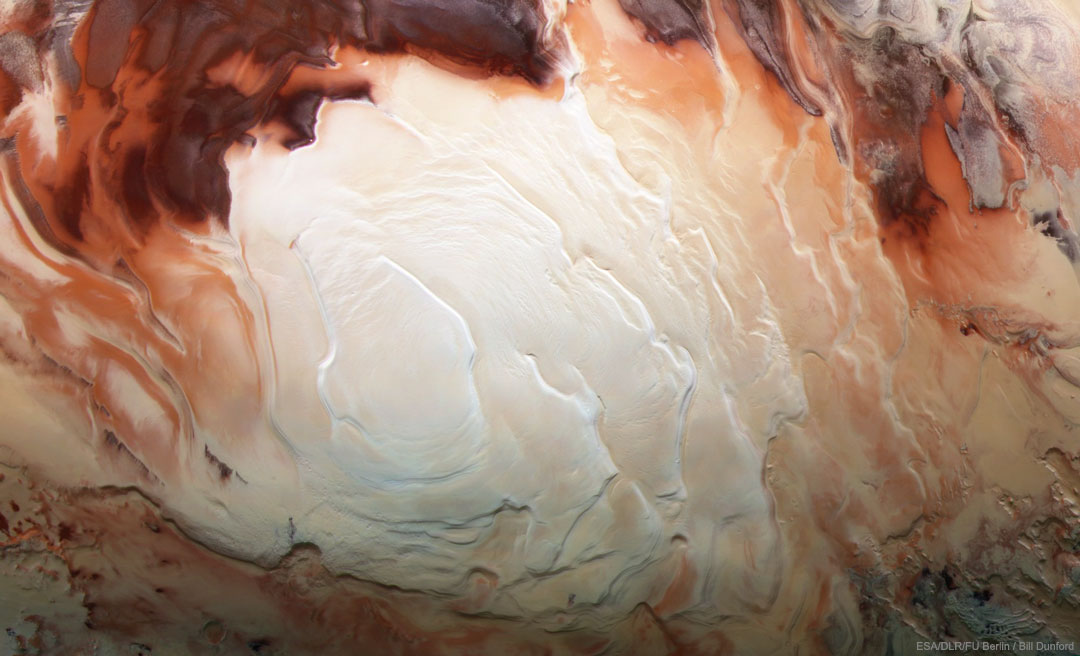
What lies beneath the layered south pole of Mars? A recent measurement with ground-penetrating radar from ESA’s Mars Express satellite has detected a bright reflection layer consistent with an underground lake of salty water. The reflection comes from about 1.5-km down but covers an area 200-km across. Liquid water evaporates quickly from the surface of Mars, but a briny confined lake, such as implied by the radar reflection, could last much longer and be a candidate to host life such as microbes. Pictured, an infrared, green, and blue image of the south pole of Mars taken by Mars Express in 2012 shows a complex mixture of layers of dirt, frozen carbon dioxide, and frozen water. via NASA https://ift.tt/2Assi1K

